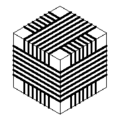Difference between revisions of "2014 Summer Project Week:Open source electromagnetic trackers usingOpenIGTLink"
From NAMIC Wiki
| Line 19: | Line 19: | ||
<div style="width: 27%; float: left; padding-right: 3%;"> | <div style="width: 27%; float: left; padding-right: 3%;"> | ||
<h3>Approach, Plan</h3> | <h3>Approach, Plan</h3> | ||
| − | *Over the past year, Peter has developed and tested a simple and fast buffer design between the steady-streaming ADC data and the bursty USB interface. This fast interface replaces two-years-ago's very-slow USB interface in Pete's prototype three-transmitter-coil three-receiver-coil 6DOF ( | + | *Over the past year, Peter has developed and tested a simple and fast buffer design between the steady-streaming ADC data and the bursty USB interface. This fast interface replaces two-years-ago's very-slow USB interface in Pete's prototype three-transmitter-coil three-receiver-coil 6DOF (six degrees of freedom) hardware. |
*With the electronics now understood, Peter's attention is returning to the problem of accurately characterizing coils. Understanding of how the electromagnetics behaves, permits design of simpler and better characterization protocols than naive protocols that just try to optimize position and orientation accuracy. | *With the electronics now understood, Peter's attention is returning to the problem of accurately characterizing coils. Understanding of how the electromagnetics behaves, permits design of simpler and better characterization protocols than naive protocols that just try to optimize position and orientation accuracy. | ||
| − | * | + | *The 6DOF position-and-orientation tracking problem naturally divides into one distance and five angles, as shown by Raab, Blood, Steiner, Jones. |
| − | |||
| − | |||
| − | |||
| − | |||
| − | |||
| − | |||
</div> | </div> | ||
<div style="width: 27%; float: left; padding-right: 3%"> | <div style="width: 27%; float: left; padding-right: 3%"> | ||
| Line 38: | Line 32: | ||
==References== | ==References== | ||
| − | *Pete's published work to date is on | + | *Pete's published work to date is on [[Open Source Electromagnetic Trackers|Open Source Electromagnetic Trackers]] and on [[http://home.comcast.net/~traneus http://home.comcast.net/~traneus]]. |
| − | |||
| − | |||
| − | |||
| − | |||
| − | + | *Frederick H. Raab, Ernest B. Blood, Terry O. Steiner, Herbert R. Jones, "Magnetic Position and Orientation Tracking System", IEEE Transactions on Aerospace and Electronic Systems, Vol. AES-15, No. 5, September 1979, pages 709 to 718. | |
| − | and on | ||
</div> | </div> | ||
Revision as of 13:26, 18 June 2014
Home < 2014 Summer Project Week:Open source electromagnetic trackers usingOpenIGTLink
Key Investigators
- Retired: Peter Traneus Anderson
- BWH: Tina Kapur, Sonia Pujol
Objectives
- This open-source electromagnetic tracker project aims to teach and develop open-source electromagnetic trackers, to enable extending performance in directions that existing proprietary trackers do not address.
- This project aims, in part, to develop methods of accurately characterizing transmitter and receiver coils without the use of costly precision robots.
Approach, Plan
- Over the past year, Peter has developed and tested a simple and fast buffer design between the steady-streaming ADC data and the bursty USB interface. This fast interface replaces two-years-ago's very-slow USB interface in Pete's prototype three-transmitter-coil three-receiver-coil 6DOF (six degrees of freedom) hardware.
- With the electronics now understood, Peter's attention is returning to the problem of accurately characterizing coils. Understanding of how the electromagnetics behaves, permits design of simpler and better characterization protocols than naive protocols that just try to optimize position and orientation accuracy.
- The 6DOF position-and-orientation tracking problem naturally divides into one distance and five angles, as shown by Raab, Blood, Steiner, Jones.
Progress
References
- Pete's published work to date is on Open Source Electromagnetic Trackers and on [http://home.comcast.net/~traneus].
- Frederick H. Raab, Ernest B. Blood, Terry O. Steiner, Herbert R. Jones, "Magnetic Position and Orientation Tracking System", IEEE Transactions on Aerospace and Electronic Systems, Vol. AES-15, No. 5, September 1979, pages 709 to 718.


